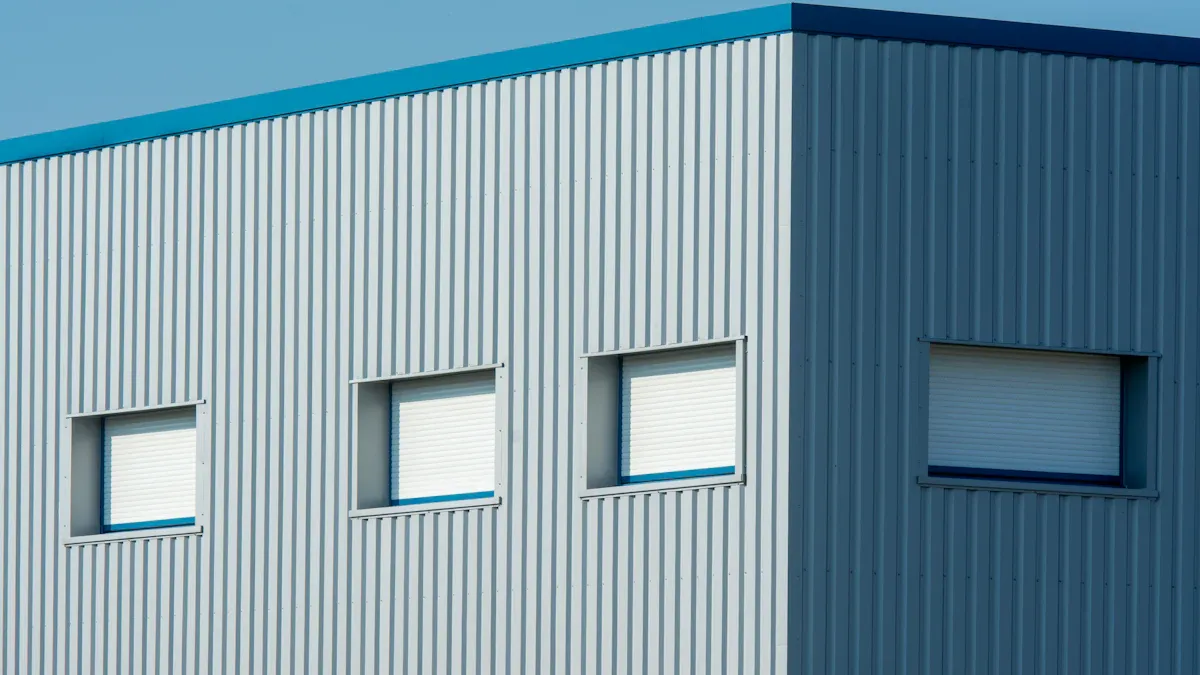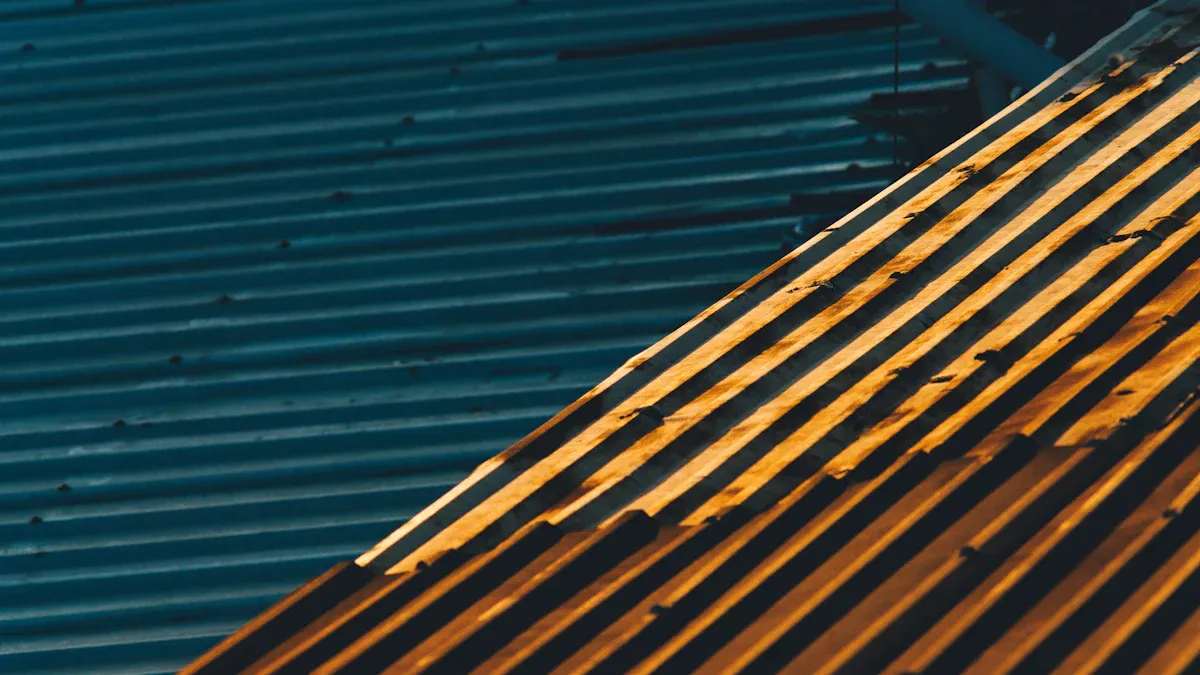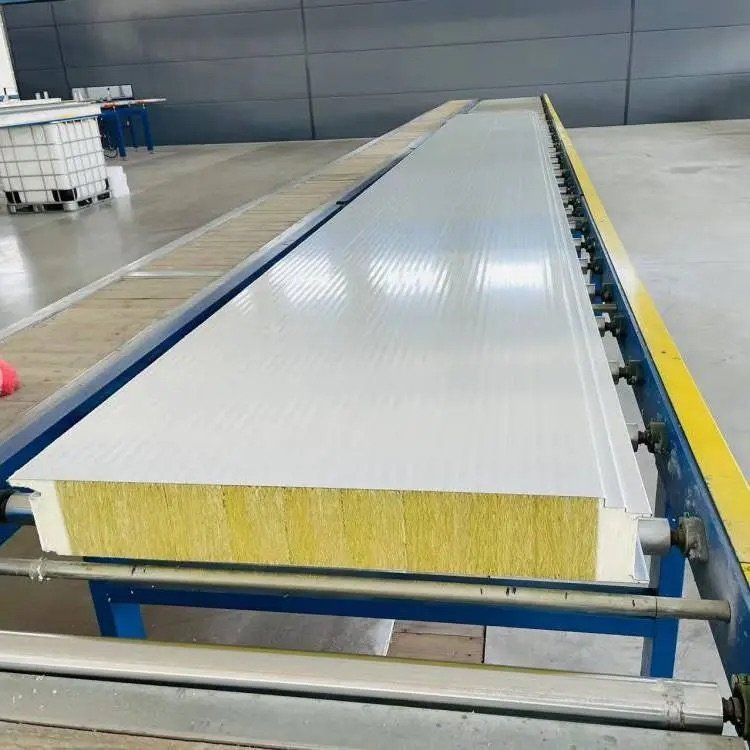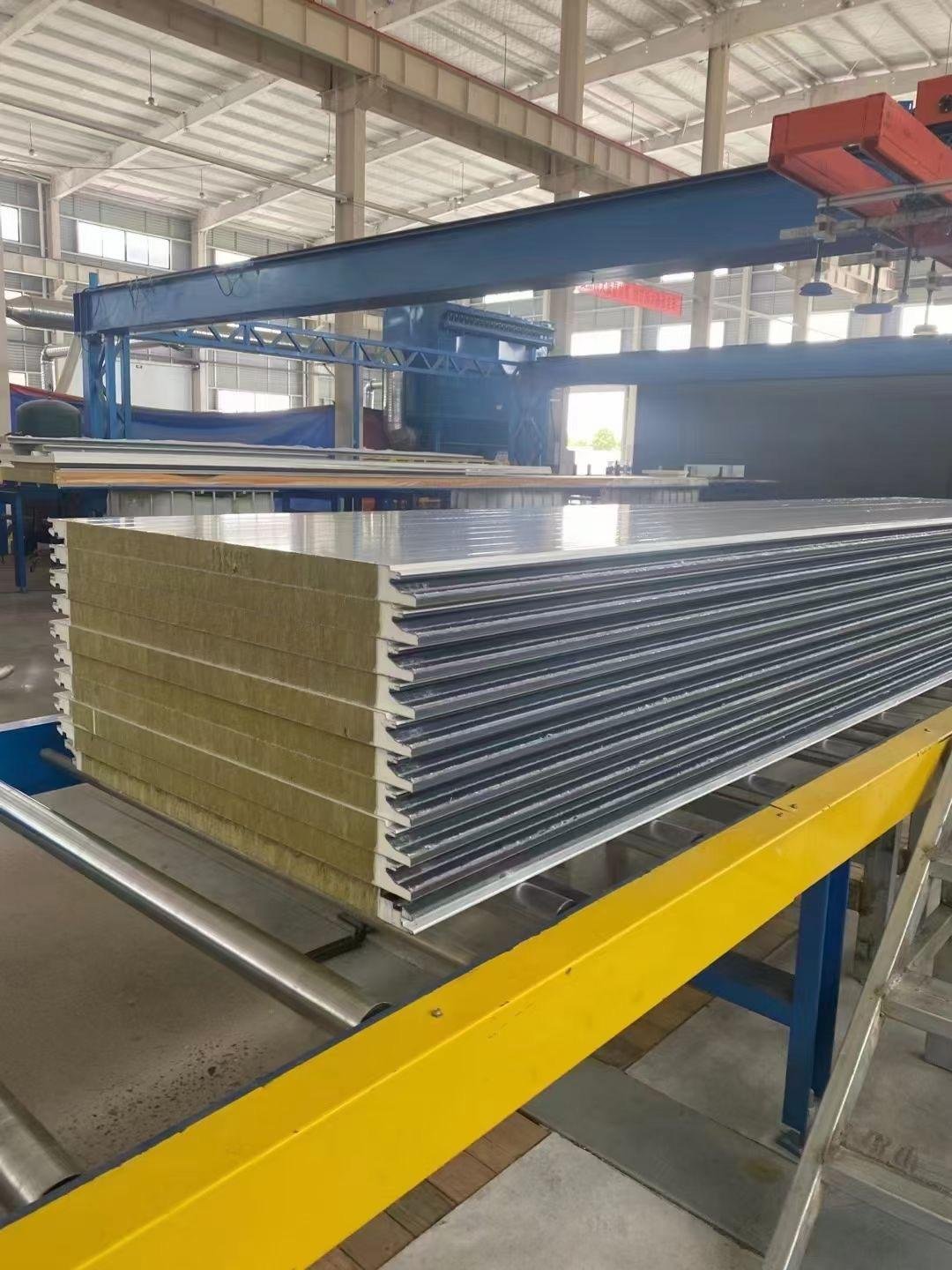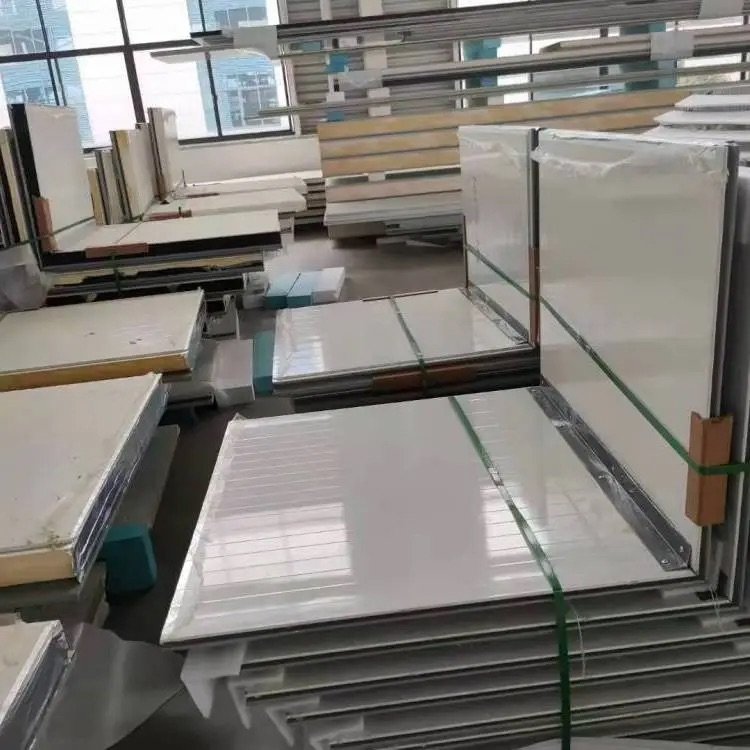
Sandwich panels are modern building materials with a layered design. They have two strong outer layers and a light middle part. This design makes them strong and good at keeping heat in or out. These panels are important in today’s construction because they save energy, last long, and can be used in many ways.
The need for sandwich panels has grown a lot recently. For example, the world market for these panels was worth $7.69 billion in 2023. It is expected to grow to $13.70 billion by 2031. This shows more people want energy-saving materials and more buildings are being made worldwide.
This blog will explain the good and bad sides of different sandwich panels. It will help you choose the right ones for your projects.
Key Takeaways
Sandwich panels are strong, light, and save energy, making them great for building projects.
Different cores, like foam or plastic, give benefits like warmth and low cost, helping you pick the right one.
Fire safety is important; mineral wool panels resist fire well, so they work for schools and factories.
Think about what your project needs, like warmth, strength, and money, to pick the best panel for long use.
Caring for the planet matters; pick panels you can recycle to help the Earth and build green.
What Are Sandwich Panels?
Structure and Components
Outer Layers
The outer layers are very important for how panels work. These layers are usually made of strong materials like aluminum, steel, or fiber-reinforced plastics. They make the panels tough and protect the middle part from damage. These layers also add strength, making the panels great for buildings like factories and cold storage areas.
Core Materials
The middle part, or core, is light but useful. It is often made from materials like expanded polystyrene (EPS), polyurethane (PU), or mineral wool. Each type has its own benefits. For example, EPS keeps heat in or out well, and PU is great for saving energy. The core and outer layers together make a strong, light panel that is easy to use and insulates well.
Key Features
Lightweight and Strong
Sandwich panels are strong but not heavy. The tough outer layers and light core make them perfect for many building projects. You can use them for roofs, walls, or even sports buildings without adding too much weight.
Insulation Properties
One of the best things about sandwich panels is their insulation. Materials like PU and EPS keep heat from passing through easily. This helps keep indoor spaces warm or cool and saves energy. They are a great choice for places like cold storage or factories.
Versatility
Sandwich panels can be used in many ways. They work for walls, roofs, and even special uses like cold rooms. They are quick to make and install, saving time and money on building projects.
Tip: Think about what your project needs, like insulation or strength, before picking a sandwich panel.
Types of Sandwich Panels

Sandwich panels come in different types for various needs. They are grouped by their core materials or how they are used. Knowing these types helps you pick the best one for your project.
Core Material-Based Types
Polyurethane (PU) Panels
Polyurethane panels keep indoor spaces at steady temperatures. They are great for cold storage and food factories. These panels save energy, which lowers costs over time.
Polystyrene (EPS) Panels
Expanded polystyrene panels are light and budget-friendly. They provide good insulation, making them useful for homes and offices. If you want a cheap option that works well, choose EPS panels.
Mineral Wool Panels
Mineral wool panels resist fire and block noise well. They are used in factories and schools where safety and quiet are important. These panels are ideal for projects needing strong fire protection.
Honeycomb Panels
Honeycomb panels are light but very strong. Their special design makes them good for walls and roofs. If you need strength without extra weight, honeycomb panels are a smart choice.
Application-Based Types
Wall Panels
Wall panels insulate well and are strong. They help save energy in homes and offices. These panels are a good option for many building projects.
Roof Panels
Roof panels keep heat in and resist bad weather. They are often used in warehouses and homes. If you need a tough roof, these panels work well.
Cold Storage Panels
Cold storage panels keep temperatures steady. They are used in food factories and refrigerated trucks. These panels save energy in places needing constant cooling.
Note: The sandwich panel market is growing fast because of their many uses and energy-saving features. Companies are always improving them to meet modern building needs.
Core Material | Key Benefits | Typical Uses |
|---|---|---|
Mineral Wool | Great fire resistance, blocks noise | Factories, schools |
Polyurethane | Excellent insulation, saves energy | Cold storage, food factories |
Expanded Polystyrene | Lightweight, affordable, good insulation | Homes, offices |
Honeycomb | Lightweight, very strong | Walls, roofs |
By learning about sandwich panels, you can choose the right ones for your project.
Advantages and Disadvantages of Sandwich Panels

Polyurethane (PU) Panels
Advantages
Polyurethane panels are great at keeping heat in or out. This helps lower energy bills by maintaining indoor temperatures. They are light, so they are easy to move and install. These panels last long because they resist mold, rot, and mildew. Fire retardants make them safer by slowing down flames. PU panels are stronger and insulate better than polystyrene panels.
Disadvantages
PU panels cost more than other types, which may not fit tight budgets. Recycling them is hard because of their mixed materials, raising environmental concerns. If installed poorly, they might not work well and could get damaged.
Polystyrene (EPS) Panels
Advantages
Polystyrene panels are a cheaper way to insulate buildings. They are light, making them simple to transport and set up. While not as insulating as PU panels, they still save energy in homes and offices. Their low price makes them a good pick for projects with limited money.
Disadvantages
EPS panels don’t insulate as well as PU panels. They are less strong because they are not as dense. If not sealed properly, they can soak up water, which lowers their durability and performance over time.
Mineral Wool Panels
Advantages
Mineral wool panels are excellent for fire safety. They don’t burn, making them perfect for factories and schools. These panels also block noise well, reducing sound by about 30 dB. Their strength and density make them good for projects needing safety and quiet spaces.
Disadvantages
Mineral wool panels are heavier, making them harder to handle and install. They don’t insulate heat as well as PU panels. Their weight and density can also raise costs, which might not suit budget-friendly projects.
Tip: Think about what your project needs most, like safety, insulation, or cost, before picking a panel.
Honeycomb Panels
Advantages
Honeycomb panels are very strong but still lightweight. They have a special honeycomb-like core between two hard layers. This design makes them tough without being heavy. These panels are great for industries like cars and planes. They work well for roofs and walls needing strength without extra weight.
Another benefit is their good insulation. The honeycomb core helps stop heat from moving through. This keeps indoor spaces at steady temperatures. They are perfect for energy-saving buildings. Their light weight also makes them easy to move and install. This saves time and money during construction.
Honeycomb panels are also fire-resistant. Their hard outer layers and core slow down flames. This makes them safe for places where fire protection is important.
Disadvantages
Honeycomb panels do have some downsides. Making them is tricky, so they cost more than other panels. If your budget is small, they might not be the best choice.
These panels don’t block sound very well. They are strong and insulate heat, but they let noise through. This can be a problem for schools or factories needing quiet spaces.
Also, installing honeycomb panels needs special tools and skills. If not done right, they might not last as long or work as well. Proper installation is key to getting the most out of them.
Tip: Think about what your project needs most, like safety, insulation, or cost, before picking honeycomb panels.
Choosing the Right Sandwich Panel
Application-Specific Considerations
Insulation Needs
Think about your project’s insulation needs first. For cold storage or energy-saving buildings, use panels like polyurethane (PU) or expanded polystyrene (EPS). These materials keep indoor temperatures steady and save energy. If your project is in extreme weather, pick panels with top insulation for better performance.
Fire Resistance
Fire resistance is very important for schools, factories, and public spaces. Mineral wool panels are great because they don’t burn and slow flames. Always check for safety certifications like FM Approval. Fire-resistant panels protect buildings and keep people safe.
Structural Strength
For strong and durable panels, choose ones with tough outer layers. Honeycomb panels are lightweight but very sturdy. They are perfect for warehouses or busy areas. Make sure the panels can handle the stress of your project’s environment.
Tip: Find manufacturers who offer custom panels to fit your needs.
Budget and Cost
Balancing Cost and Performance
It’s important to balance cost and quality. PU panels insulate well but cost more. If you need a cheaper option, EPS panels work fine for basic insulation. For fire safety, mineral wool panels cost more upfront but save money by reducing fire risks. Think about the total cost, including setup and upkeep, before deciding.
Sustainability
Recyclability
Sustainability matters in construction today. Panels with metal layers can often be recycled. This helps reduce waste and supports eco-friendly building. Pick panels made from reusable materials to lower environmental harm.
Energy Efficiency
Sandwich panels save energy by insulating well. They cut heating and cooling costs. Lightweight panels also need less heavy equipment to install, lowering emissions. By choosing energy-efficient panels, you save money and help the planet.
Note: Look for manufacturers with ISO14001 certification for eco-friendly products.
Picking the right sandwich panel means knowing their types and uses. For example, PUF panels are great for keeping heat in or out. EPS panels are cheaper and good for basic insulation. Rockwool panels are best for fire safety, perfect for risky areas. Each type fits different needs, like cold storage or quick-build structures.
Summary of Uses and Benefits
Use | Benefit |
|---|---|
Cold Storage | Keeps food fresh by staying cold and saving energy. |
Commercial and Industrial Sites | Lightweight panels make building faster and save energy. |
Prefabricated Structures | Quick to build while staying strong and keeping heat in. |
Clean Rooms and Labs | Keeps spaces clean and controlled for hospitals or labs. |
Main Pros and Cons
Pros:
Easy to carry and install.
Strong and keeps heat in or out well.
Fire-safe and lasts a long time.
Cons:
Costs more than regular materials.
Not very flexible for creative designs.
Can get damaged by water if not sealed.
Tip: Think about your project’s needs for insulation, safety, and cost. Talk to experts to pick the best panel for lasting results.
FAQ
What are sandwich panels used for?
Sandwich panels are used to build walls, roofs, and cold rooms. They help with insulation, strength, and fire safety. You can see them in homes, factories, warehouses, and cold trucks. Their many uses make them great for different projects.
What makes sandwich panels energy-efficient?
The cores, like polyurethane (PU) or expanded polystyrene (EPS), stop heat transfer. This keeps spaces warm in winter and cool in summer. Using these panels saves energy and lowers heating and cooling costs.
What is the lifespan of sandwich panels?
Sandwich panels last 20-50 years with good care. Proper setup and regular checks make them last longer. Panels with strong outer layers, like steel or aluminum, handle weather better.
What factors should you consider when choosing a sandwich panel?
Think about insulation, fire safety, and strength. For example, PU panels insulate well, while mineral wool panels resist fire. Budget and eco-friendliness are also important when picking a panel.
What are the main disadvantages of sandwich panels?
Some panels, like PU or honeycomb, cost more than others. Bad installation can make them less effective. Some, like EPS, may take in water if not sealed. Recycling certain panels can also be hard.
Tip: Talk to experts to pick the right material and ensure proper setup.

